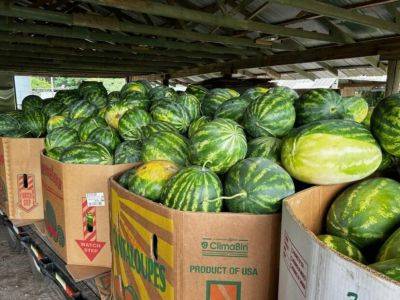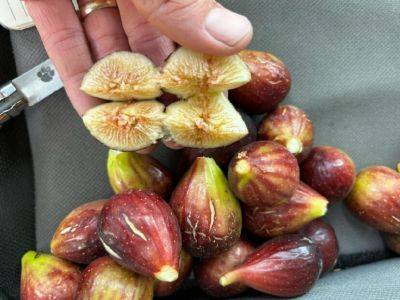Zack Snipes
SC Fruit and Vegetable Field Report January 11, 2021
24.07.2023 - 12:17 / hgic.clemson.edu
Rob Last reports, “Vegetable crops are growing out of the impacts of frost well. There is active Alternaria in places on brassica crops. Insect activity in vegetable crops in the area remains low. Strawberry crops are moving well, with a few spider mites and aphids being observed. Remember, if mite treatment is needed, use a specific miticide to target the pest to avoid flaring populations. If you need a second pair of eyes to help scout, then please give me a shout.”
Zack Snipes reports, “I’ve been getting a good many calls about strawberries in recent weeks. The warm weather has really pushed our berries, perhaps too far along for this time of year. I know of a couple of farms that are already harvesting, which I’m not sure is a great thing this early in the season. Most fields look good with great growth, but we only have a few crowns for each plant. Hopefully, some cool weather will come in and slow them down. Make sure to sanitize the plants by removing all dead tissue and put out a preventative spray once you are done sanitizing. Good preventative sanitization right now can do wonders for disease management later in the season. Now is a good time to manage weeds before they get too large. And while I am at it…now is the perfect time to get ready for the season by checking sprayers, getting fertigation systems set up and calibrated, and purchasing pesticides you know you will need for the season.”
Justin Ballew reports, “The weather has remained cool, so everything is growing pretty slowly. We had another very rainy day last week, and we got a little over 2 inches at my house. That’s over 6 inches for me so far in 2021, and I’ve had some folks tell me they’ve gotten over 8. We are seeing some cold damage to
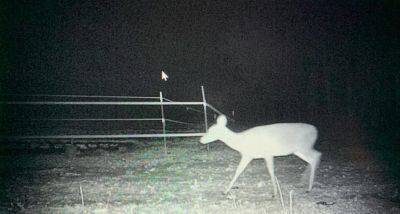
SC Fruit and Vegetable Field Report – January 25, 2021
Rob Last reports, “Strawberry crops in the area are looking good with good crown development. We are seeing open flowers and some fruit set based on warmer conditions. These crops are cause for some concern as we are likely to see damage from forecast cold snaps. There is evidence of botrytis (gray mold) in crops on cold damaged flowers and fruit. Sanitation can really help to mitigate the spread of the disease. Spider mites remain active and in places are requiring treatment. Remember to avoid pyrethroids for mite control as these can flare mite populations.”
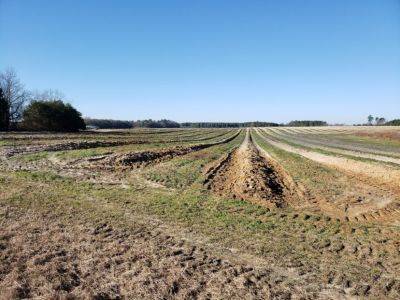
SC Fruit and Vegetable Field Report January 4, 2021
Happy New Year! We hope everyone had a great holiday season and is off to a good start in 2021. We have several virtual grower meetings coming up over the next two months, so keep an eye on the “Upcoming Events” page for info. Also, don’t forget the Southeastern Regional Fruit and Vegetable conference kicks off virtually this week, and it’s not too late to register.
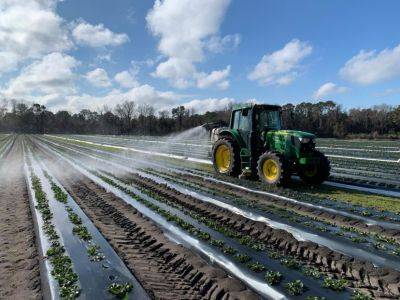
SC Fruit and Vegetable Field Report January 19, 2021
Dr. Matt Cutulle reports, “Burndown herbicide efficacy can be reduced in colder weather, especially systemic products such as glyphosate (Reduced translocation in the cold means herbicide does not move through the plant as much).”
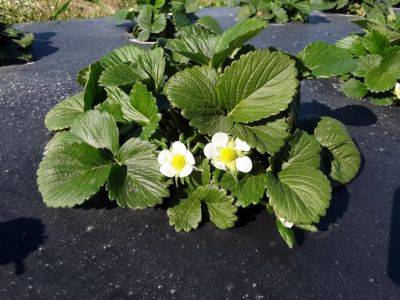
SC Fruit and Vegetable Field Report March 1, 2021
Rob Last reports, “Following a few days of warmer conditions, crops are moving on strongly. Flowering and fruit set is occurring in strawberry crops. At present, spider mites in treated crops are at very low populations, but with warmer weather, populations can increase rapidly. As we are entering flowering and fruit set, sanitation and fungicide applications will be required to keep gray mold managed. Remember to rotate FRAC codes to avoid resistance build-up. Fertigation is being applied, and it will be well worthwhile taking a tissue test from crops. Blueberries in the area are showing bud swell with early varieties showing open flower.”
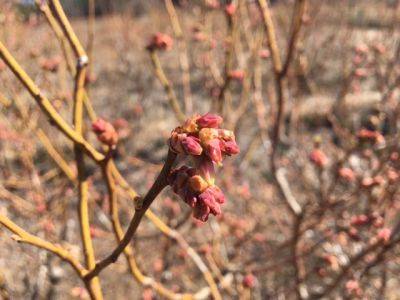
SC Fruit and Vegetable Field Report March 8, 2021
Zack Snipes reports, “We had some sunshine last week, which really brightened everything up. The last few nights have been cool, with some frost on the ground in the mornings. Things are starting to green up, and fields are drying out enough to plant. We are still direct-seeding crops around the region and will begin transplanting tomatoes in some areas this week. I spent last week checking strawberry fields to make sure things were good to go before they really bust out. I have been helping folks calibrate their drip fertigation systems for the upcoming season. If you think you need a hand with this, please let me know. Dialing in exactly how much fertilizer to use each day or week can really increase yields and lessen the amount of fertilizer that is leached. Leaching fertilizer means your plants aren’t taking it up, thus costing you money.”
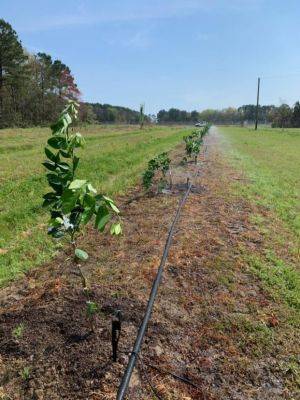
SC Fruit and Vegetable Field Report March 29, 2021
Rob Last reports, “Strawberry crops continue to develop well with sustained flowering and fruit set. Early crops are ripening well, with crops coming to market. Just a note of caution, the weather last week can be conducive to gray mold development; fungicide programs will be key. Thrips are active in some crops, so keep scouting. Melon transplants are going in the ground over the last week, with development looking very promising. Peaches in the area are all but finished flowering with a great fruit set. Finally, as we are looking at a cooler week for flowering fruit crops, keep an eye on the forecasted temperatures to determine if any protection will be required. Fruit and closed buds can tolerate cooler temperatures than flowers, but damaged flowers can increase gray mold development.”

SC Fruit and Vegetable Field Report March 22, 2021
Zack Snipes reports, “We got some needed rain, but we got a lot of it in a short amount of time. Winter peas and spring-planted brassicas are looking good. Tomato and squash are in the ground on some farms, but because of the cooler weather and soil temperatures, they haven’t really taken off yet. I see a lot of brassica fields leftover from the fall. These fields are harboring all of our insects and diseases that we will have to fight this coming season. Mow these fields down and turn them under. Do not leave them. I am seeing lots and lots of diamondback moths and black rot in these leftover fields. Some more sad news this week from the Lowcountry as Mr. Adair McKoy, Sr. passed away this past week. Mr. McKoy was full of wisdom and had years and years of practical farming knowledge that he loved sharing with others. Never did I visit him when I didn’t learn something new. His love and care for the land was truly inspirational.”

SC Fruit and Vegetable Field Report. – April 19, 2021
Zack Snipes reports, “We had some nice weather last week. The tomato crop is looking great, as are most of our cucurbits and greens. I am seeing increased caterpillar pressure across the area. We had several calls from across the state early last week about sunburned strawberries. We went and visited the farms and tried to rule out disease, frost damage, etc. The only thing we came up with is some sort of sunburn damage. The damage was most prevalent on the southern facing sides of beds where there was poor canopy coverage. I also saw damaged tissue on tender lettuce, in my citrus plots at the CREC and on some new shoots of ornamentals at my house. I checked the solar radiation at the weather station at the CREC, and the units (W/m2) were 300-500 units higher on Monday compared to the prior 4 days. Perhaps we had intense UV levels and higher temperatures that led to this damage? Here is a really great article on the types of sunburn on plants and fruit.”
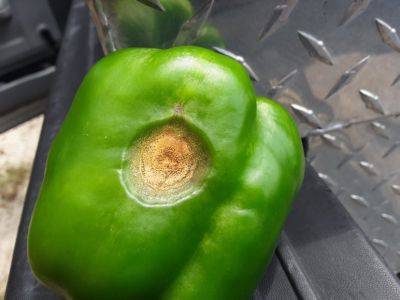
SC Fruit and Vegetable Field Report June 21, 2021
Rob Last reports, “Given the rainfall and humidity levels, we are seeing increases in foliar and fruit diseases on a range of crops. This includes cottony leak in cucumbers, anthracnose in peppers, tomatoes, and cucurbits. Also, please be aware cucurbit downy mildew is very active now. As a result, it is going to be really important to maintain fungicide programs in both a timely manner and to be robust. That being said, we have some great quality melons, both cantaloupe and watermelons, coming to harvest, as well as good volumes of quality peaches, blackberries, and a host of other vegetable crops.”
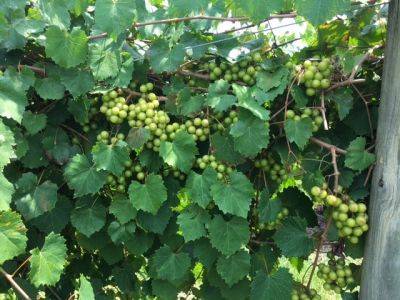
SC Fruit and Vegetable Field Report – July 26, 2021
Zack Snipes reports, “We are in a summer weather pattern with warm, muggy days and occasional thunderstorms. Most crops have finished up or are in the process. Now is a great time to sit down and do some crop planning and field rotation planning. I collected many soil and root tissue samples lately and had them analyzed for nematodes. I was surprised at how many nematodes were present in the fields. Nematodes can interfere with growth, cause stunting, and lower overall yields. Sometimes the symptoms of nematodes can be very discrete, so sampling right now is the best way to get a baseline of your populations and how to properly manage and rotate fields. If left unchecked, thousands of dollars are wasted before the first seed is planted into a field.”
